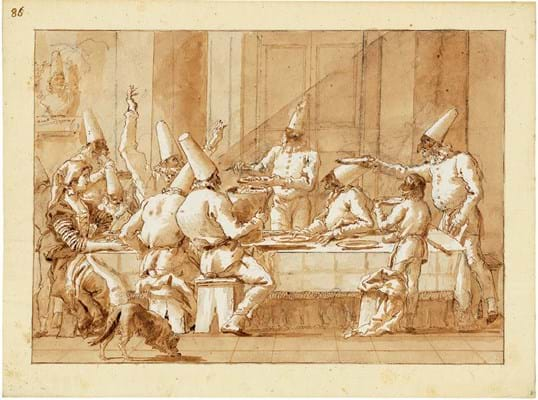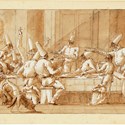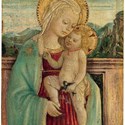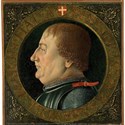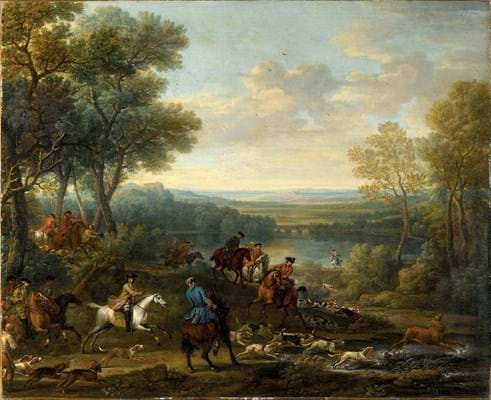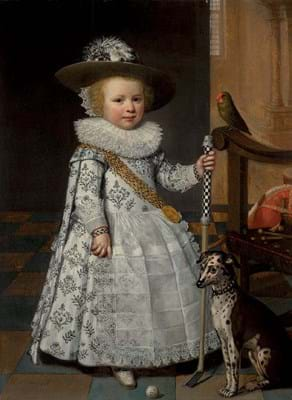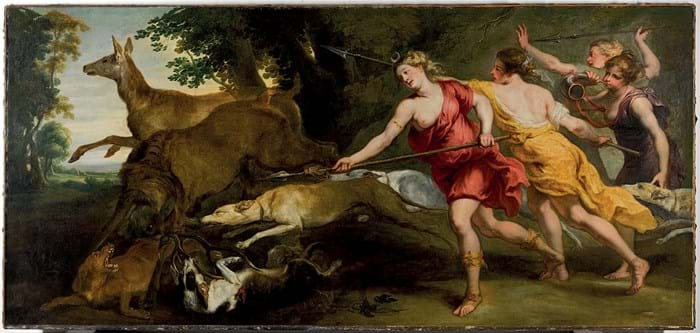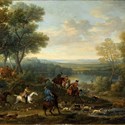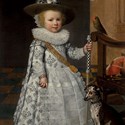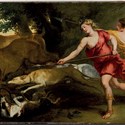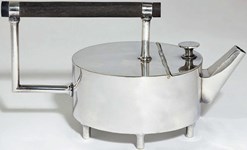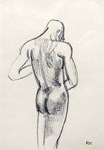It is no secret that the finite supply of fresh, high-quality pictures is one of the Old Master market’s big headaches. This was evident at the latest series in London, held in its traditional early December slot before Christmas, where blue-chip works were especially thin on the ground.
The timing was not great either. For potential vendors, the December general election (which had yet to take place) and wider geopolitical uncertainties, such as Brexit, made the consigning of valuable pictures to this series an unattractive prospect.
The overall takings from 153 lots offered across three major sales at Sotheby’s, Christie’s and Bonhams totalled £33.2m hammer, down £10m on the equivalent sales last December. Sotheby’s struggled most, with its total more than half what it was a year ago. Nevertheless, selling rates held up – Christie’s with 86% and Sotheby’s with 77%. Bonhams had a patchier auction with 57% sold (however, this was a 11% increase on last year’s selling rate).
Almost without exception, top-quality works not seen on the market for some time drew the biggest bidding battles. With big-brand names scarce, works by less established artists came into the spotlight.
Christie’s
In this situation where top consignments are hard to come by, Christie’s (25/20/13.5% buyer’s premium) fleshed out its 44-lot offering on December 3 with sculpture and drawings.
Generating excitement in the latter category were six pen-and-ink studies by Giovanni Domenico Tiepolo (1727-1804), one of the nine children of 18th-century Venetian master Giovanni Battista Tiepolo. The property of a trust, the group came from the rare and curious Punchinello series, which Tiepolo created in the 1790s for reasons still unknown.
The group of 104 detailed drawings, illustrating scenes from the life of Commedia dell’arte’s popular clown, Punchinello, was discovered unbound in 1920 at an auction in London and bought by the gallery Colnaghi for £610.
In fresh condition, the drawings at Christie’s were originally from the dozen acquired by the art historian Brinsley Ford between 1936-37.
They raised £3.1m hammer with the most expensive, a 14 x 18in (34 x 46cm) work depicting a table of animated Punchinellos feasting on gnocchi, setting a record for a drawing by the artist at £820,000 (£300,000-500,000 estimate). The last lot of the six, Punchinellos at a Carpenter’s Workshop, sold for £360,000 (£200,000-300,000 estimate) to Stephen Ongpin, a London dealer of Old Master drawings.
Elsewhere, good results were achieved for paintings that combined market freshness with reasonable estimates. One was a striking profile portrait of Philip II, Duke of Savoy, in armour and chain mail by Macrino d’Alba (c.1470-before 1528), a leading Piedmontese artist at the turn of the 16th century. The work had passed by descent from the sitter and was knocked down at £460,000 against a guide of £100,000-200,000.
As it was not previously known that the artist worked for the Savoy Court, Christie’s said the discovery of the 13¼ x 13in (33 x 32 cm) oil on panel was a ‘significant addition to the oeuvre of Macrino d’Alba’.
A small and refined oil on panel of the Madonna and Child by Bartolomeo Caporali (c.1420- 1505), not seen on the market since the 1920s, took £80,000 (£40,000- 60,000 estimate). The 6 x 4in (14 x 10cm) devotional piece had previously been attributed to Benedetto Bonfigli, another accomplished painter at Perugia in the mid-15th century.
Demand emerged for a decorative and well-preserved flower study by Daniel Seghers (1590-1661), one of only about 30 known to exist by the Antwerp painter. It had resided in a Swedish collection since the late 19th century and found a buyer at £480,000 (£250,000-350,000 estimate). A possible pendant to the work sold in the same rooms earlier this year for £503,250 (with fees).
The sale’s top earners were two exquisite 15th-century predella panels by the Sienese artist Giovanni di Paolo (c.1399-1482), seized by the Nazis and recently restituted to the family of the Jewish telecommunications magnate Harry Fuld. Finely preserved and depicting highly stylised and imaginative subjects, the pair sold for a combined £7.5m. The sum was nearly half Christie’s overall total.
Sotheby’s
Top lot at Sotheby’s (25/20/13.9% buyer’s premium) was an informal portrait painted with great skill by Netherlandish court painter Anthonis Mor (c.1516-76) which was pursued by five bidders against an estimate of £300,000-500,000.
The sitter, Jacopo da Trezzo (c.1519-89), was a celebrated Italian medallist, sculptor and jeweller who knew Mor well. Adding to its allure, the 23 x 17in (58 x 42cm) oil on panel had not previously been seen at auction before. It sold to a private buyer on the phone at £1.6m, setting an auction record for the painter.
The same deep-pocketed buyer beat competition from three other bidders to secure a vast 6ft x 12ft 8in (1.83 x 3.86m) canvas of Diana and her Nymphs Hunting from the studio of Peter Paul Rubens (1577-1640). It had been part of a royal commission from Philip IV of Spain and once hung in the King’s hunting lodge outside Madrid.
The £1.4m realised – well in excess of the £300,000-500,000 guide and a healthy increase on the £100,000 it last made in 1989 – reflects the enduring appeal for works by, or in this case closely connected to, the sector’s big-brand artists.
Also generating excitement and a new auction record for the artist in sterling was Jan Anthonisz Van Ravesteyn’s (1572-1657) elaborate Netherlandish portrait of a young boy holding a ‘colf’ stick – a precursor to the modern golf club.
Described as a ‘quintessential image of childhood’ in Dutch art of the early 1600s by Sotheby’s, the 3ft 8in x 2ft 9in (1.12m x 85cm) oil on oak panel doubled hopes to sell for £310,000 following a five-way bidding battle. The vendor’s husband had secured the painting for a modest £1760 back in 1992.
A Claudian-inspired landscape by John Wootton (1678-1794) was the sole British entry in a top 10 list dominated by Italian, Dutch and Flemish works. Showing King William III stag hunting, the 4ft 3in x 5ft 1in (129 x 154cm) oil on canvas belongs to a series of large-scale hunting pieces Wootton painted for his most esteemed aristocratic patrons – possibly royalty in this case.
It was probably given to the 1st Earl Harcourt (1714–77), a British ambassador to Paris, Lord Lieutenant of Ireland and governor to the Prince of Wales, later King George III (1738–1820), and was recorded at Nuneham Courtney in Oxfordshire by 1806. The painting’s illustrious history and importance in the artist’s oeuvre tipped it over top estimate to sell for £310,0000 and set an auction record for the English painter.
Bonhams

Circle of Giovanni Bellini, Portrait of a gentleman said to be Paolo Morosini – £390,000 at Bonhams.
This Old Masters series brought to the market two valuable works linked to the influential Renaissance painter Giovanni Bellini (c.1430-1516). A portrait cautiously catalogued as ‘circle of’ the Venetian painter but possibly attributable to him (and stated as such in a forthcoming publication on the artist) was offered in Bonhams’ (27.5/25/20/13.9% buyer’s premium) sale of Old Masters on December 4.
The work, which follows Bellini’s characteristic format of a head and shoulders seen in three-quarter view behind a parapet, is said to depict the Venetian nobleman Paolo Morosini.
Notable modern owners of the 2ft 1in x 20in (65 x 50cm) oil on panel included the Prince of Liechtenstein, German banker Leopold Koppel and The Museum of Fine Arts in San Diego. Consigned from a private collection where it had been since 1990, it made £390,000 against an estimate of £30,000-50,000.
Sotheby’s sold the other Bellini: a fully attributed oil panel of Christ carrying the cross which was pursued by three bidders including an online buyer before selling in the room for a multi-estimate £650,000. It was one of three autograph versions of the subject by Bellini.
Another painting to generate decent bidding at Bonhams was a previously unknown portrait of Elizabeth I, long thought to have been an anonymous portrait.
After a restorer removed overpainting to the face, uncovering the monarch’s features underneath, Bonhams consulted experts at the Yale Center for British Art and entered it into its Old Master sale attributing the painting to the workshop of Netherlandish painter Steven van der Meulen (fl.1543-68). The house also dated it to 1562, four years after the Virgin Queen came to the throne on the death of her half-sister Mary I.
On the day, it tipped over top estimate to sell for £270,000.
Van der Meulen’s only other known portrait of the monarch is the full-length Hampden Portrait, which achieved an auction high at Sotheby’s London in November 2007 when it sold for £2.5m (with fees).


